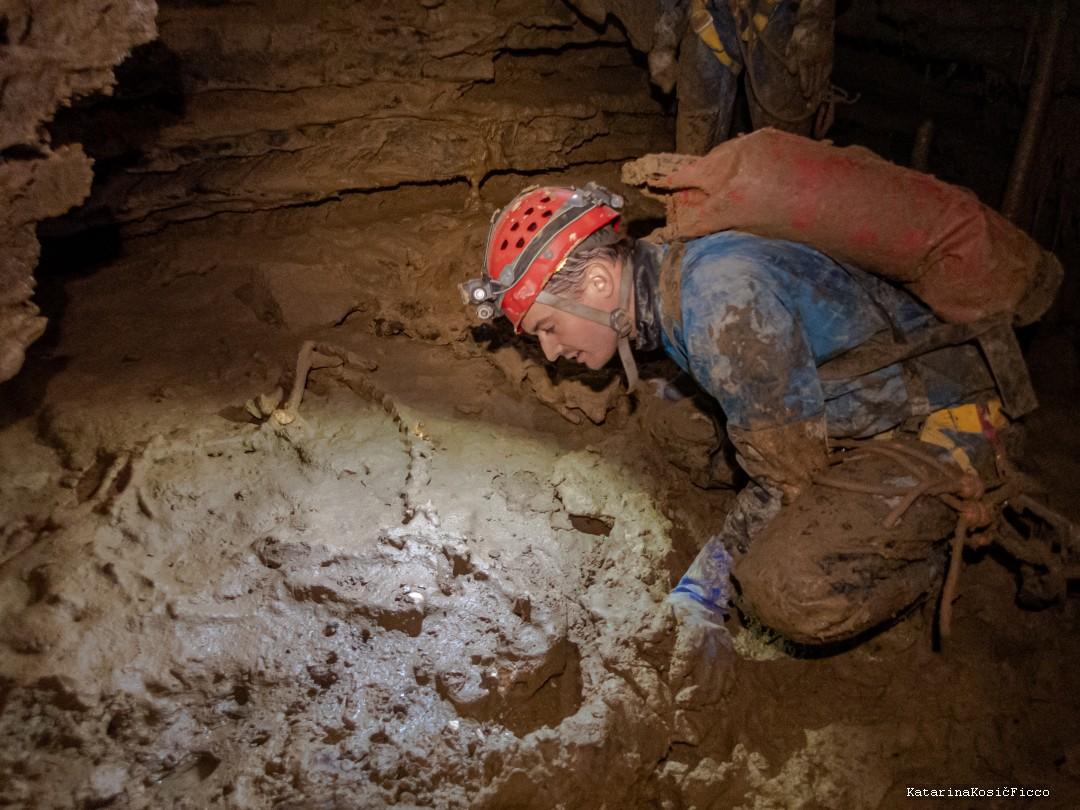
Ancient cat skeleton discovered in cave inspires questions, reveals few answers
By Callie Hietala
After lying in darkness for thousands of years, the skeleton of a large ancient cat discovered in 2016 has been excavated from Burja Cave near Natural Tunnel State Park in Lee County, VA, and brought to its new home at the Virginia Museum of Natural History (VMNH) in Martinsville.
The discovery of the skeleton, named Petra by the crew that brought it out of the cave’s depths, has yielded only more mystery and tantalizing questions to the team working on it.
“This was a definite active predator,” said Dr. Alex Hastings, former VMNH Assistant Curator of Paleontology and current Fitzpatrick Chairman of Paleontology at the Science Museum of Minnesota.
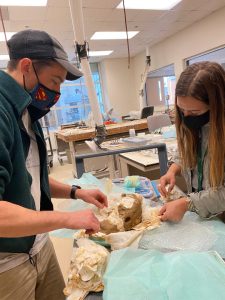
Hastings made the comment as he and VMNH Paleontology Research Technician Lucy Treado carefully unwrapped layer after layer of bubble wrap, foam padding, damp toilet paper and paper towels from Petra’s skull in the museum’s Elster Foundation Paleontology Preparation Lab hours after last month’s arrival of the skeleton in Martinsville.
“It is exceptionally rare in Virginia to find these, especially to find whole bodies like this,” he said. “We’re barely missing anything if anything at all. At bare minimum, this is going to be an amazing record of its species for its time because there just aren’t many of these. So, to a certain extent, it doesn’t matter how old it is, it’s going to be significant. It doesn’t matter which species it is, it’s going to be one of just a handful for its type.”
Petra was discovered in 2016 when Katarina Kosič Ficco, karst protection specialist for the Virginia Department of Conservation and Recreation (DCR)- Natural Heritage Division, and her husband, Mike Ficco, chairman of the Cave Conservancy of the Virginias, were searching for new caves. They discovered what they eventually named Burja Cave while hiking along a limestone ridgeline in Lee County. The cave, Kosič Ficco recalled, was a technical one, extremely muddy, and featured several steep drops and narrow passageways.
As Kosič Ficco and her husband returned to the newly discovered site with a group of fellow cavers, she recalled seeing a note left behind by another group of cavers. The note cautioned other cavers to be careful around the bones.
Kosič Ficco was initially confused by the message—she said the bones of bats and other small, cave-dwelling creatures were often found on explorations.
She recalled that upon entering the room that housed Petra’s skeleton, the bones were impossible to see because of the mud.
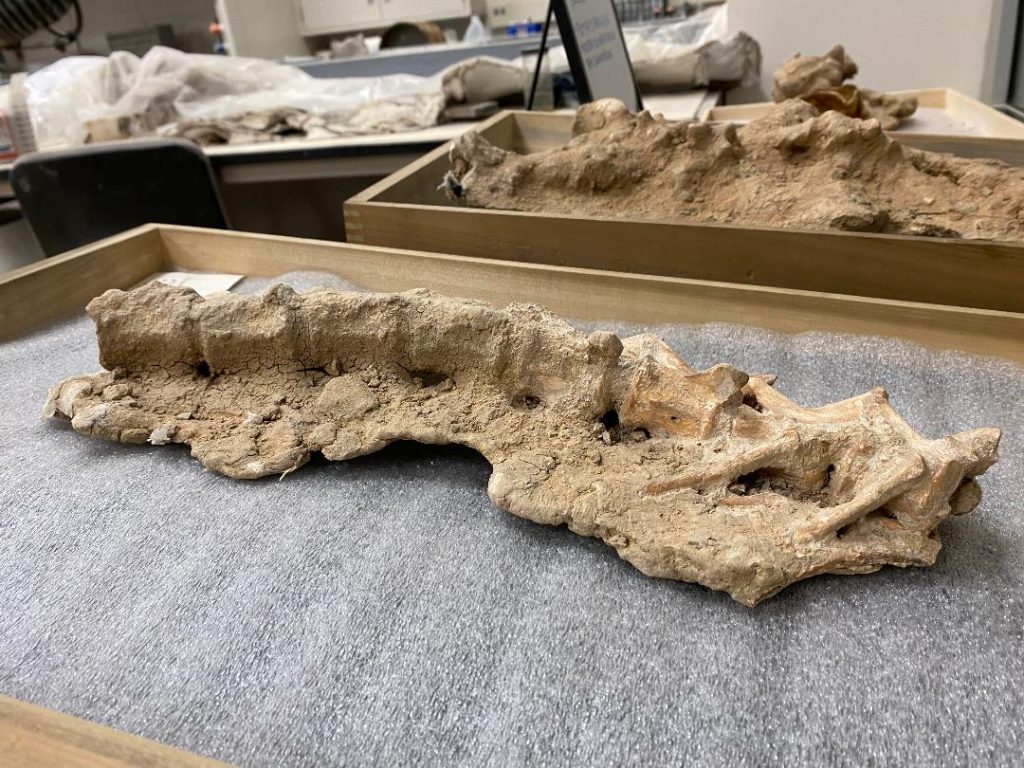
But “once you’re at ground level and it’s right in front of you, you can see the whole structure,” she said, adding that she first noticed the skull, “and then you slowly start to look, and you suddenly see the spine, the legs, the tail. This is a natural, fully preserved skeleton. For us, it was mind-blowing.”
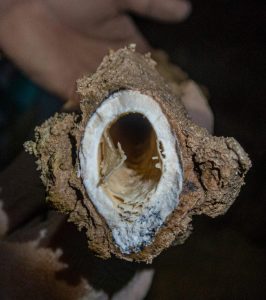
Though all in her party were highly skilled and experienced cavers, no one in Burja Cave that day had a paleontology background. However, Kosič Ficco said the group reached a few conclusions.
“Considering that the skeleton was really big, and it was obviously a cat, we knew that it must be something older because we know that cougars have not been present in Virginia for over 100 years. We knew that it must be something older than recent history,” she said.
Kosič Ficco said she realized the team would need to find a paleontologist who had the physical strength and skill to traverse the cave and reach the skeleton. Eventually, she was introduced to Hastings through her supervisor, and he learned about the discovery.
“He got super excited,” she recalled, adding the initial excitement grew when he saw images of the skeleton.
Though Hastings had been in caves before, he said “I’d never done ropes work,” which was required to descend into the cave where the skeleton rested. Hastings trained for about a year to get familiar with the gear necessary to access the site.
“Your gear gets completely inundated and impregnated with mud in a way that makes it basically not work,” he said, “but your life depends on it. So, you have to be so comfortable with your gear and how it works and what you do when it doesn’t work that you can be safe in that situation.”
Kosič Ficco and her husband took Hastings to a series of caves to build up his skills.
“We took our time,” she said, though added that it was still a relatively fast course.
Hastings also worked to secure funding for the excavation. Initially, he applied for a grant from National Geographic, but was rejected. Eventually, the Cave Conservancy of the Virginias stepped in as one of the project’s largest funders. The excavation was also made possible through the support of the U.S. Forest Service, The Science Museum of Minnesota, the VMNH, and DCR- Division of Natural Heritage.
Just as it looked like everything was in place to finally bring Petra into the light, the project suffered several setbacks. Hastings accepted a new position at The Science Museum of Minnesota. Luckily, Kosič Ficco said, his new home was near to Joe Myre, who was already involved in the project and helped continue Hastings’ training.
With everyone satisfied with Hastings’ readiness and funding in place, plane tickets were purchased, and Petra’s extraction was scheduled for April 2020. Then came the COVID-19 pandemic. After several rescheduled dates, a fully-vaccinated field crew of 11 people — Hastings, the Ficcos, Myre, Tom Malabad, Dave Socky, Lauren Satterfield, Wil and Zenah Orndorff, and Mike and Andrea Futrell — in early October made their way down an incredibly steep mountain slope to the entrance of Burja Cave.
The cave itself had narrow passages full of mud. At least four rope drops were required to reach the bottom. The team worked its way down a passage to find Petra, laying on its side in a layer of calcified mud.
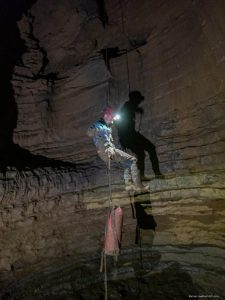
Hastings said the calcification presented an issue. Essentially, a thin layer of rock had formed underneath the skeleton, sticking everything together and making the already-delicate extraction more difficult. The skeleton’s size — about 4-feet in length — meant it would have to be removed from the cave in sections. The crew had to use strategic break points separate sections of the skeleton without causing catastrophic damage during the process.
After two long days of work, eight sections of carefully wrapped cat skeleton were hoisted from the cave’s depths, headed to the VMNH.
The discovery was significant, Hastings said.
“As we’re trying to understand particularly the progression of carnivores across Appalachia from the Ice Age to present, having more records of that really helps fill in that picture and will help us better understand what a healthy ecosystem in Appalachia would look like and possibly even help us with future conservation efforts,” he explained.
Once in the museum’s paleontology lab, Treado slowly and painstakingly began preparing the skeleton, removing the calcified layers to expose the bones beneath. Once that work is completed, the team will be able to identify Petra more precisely.
“I would be absolutely astonished if it’s less than 10,000 years old,” Hastings said, adding that he currently believes the ancient cat is likely an American cheetah.
Nearly two months after Petra’s arrival at the museum, progress has been made, but there is still much to be done.
“You’d think that this would be the time that new answers start coming out,” said Dr. Adam Pritchard, VMNH Assistant Curator of Paleontology. “But at this point, we’re actually developing all kinds of new questions, and that is really the beauty of science, learning what questions there are to ask.”
Some of the mysteries the team hopes to answer are the exact age of Petra, “how long her remains stayed locked inside of that cave,” which Pritchard said can be addressed through carbon dating. Museum staff also hope to learn what led to Petra’s fate and how she came to be entombed in Burja Cave. Pritchard said the team will study the skeleton to look for markers of disease or injury to learn what may have occurred.
“We also have the question of what kind of world Petra was living in,” Pritchard said. “One of the things that has emerged from the initial preparation of this specimen is more animals embedded in the mud surrounding Petra.”
He said he and Treado have found tiny leg bones and jaw bones from ancient bats and, just a few days ago, a partial skeleton embedded in the mud on one side of Petra’s head.
“There is almost an entire ecosystem embedded inside of that mud,” he said.
Kosič Ficco also wonders how the cat reached its final resting place.
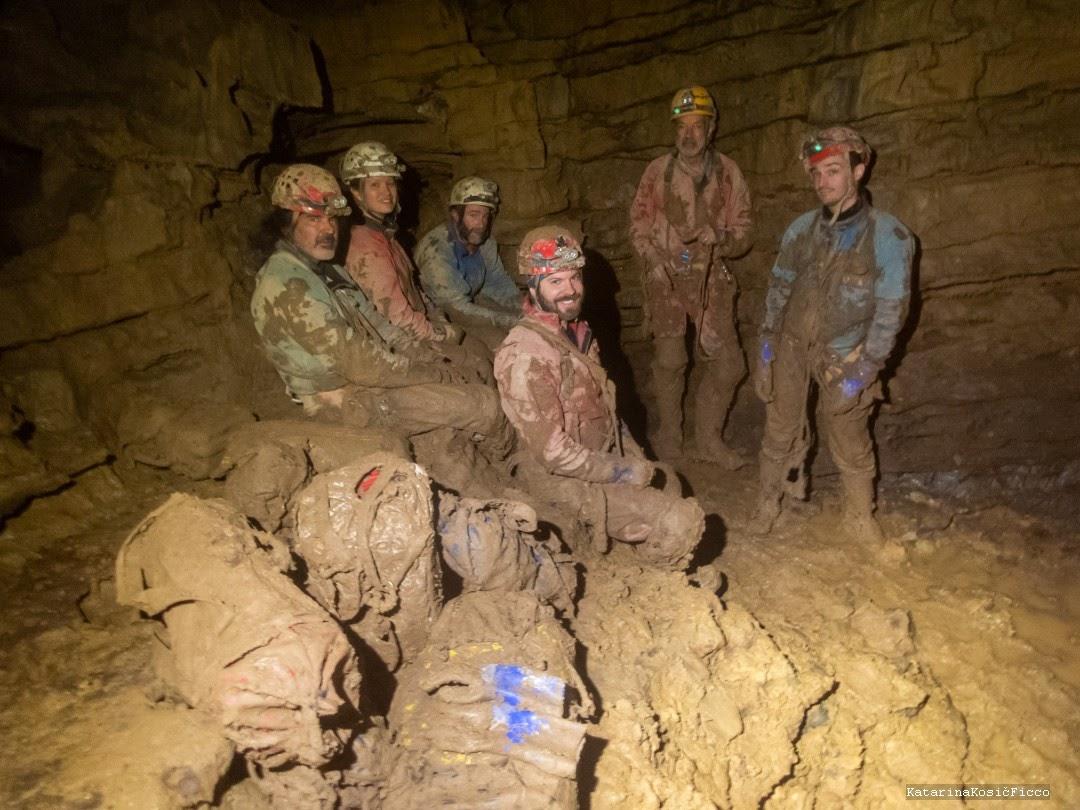
The room where Petra’s remains were discovered was incredibly difficult to reach, and Kosič Ficco said the cave would not have changed significantly between when Petra walked the earth and her discovery. Additional explorations have revealed no additional entrances to the cave, and the passageways are too narrow for an animal that size to have crawled through.
Kosič Ficco thinks Petra must have entered the cave the same way she and her husband did when they initially made the discovery, but there is a significant drop immediately upon entering the cave’s depths.
She speculates that a cat, particularly a large cat, could have navigated down due to the slope of the cave walls.
But “the question is how she bypassed the canyons we have to bypass and the shafts. At the moment, we don’t have an answer,” Kosič Ficco said.
Currently, the only thing that does seem certain is that this incredible discovery, which rested in darkness for so long, still holds so many mysteries.
Visitors to VMNH may be able to glimpse Treado working on Petra’s skeleton — windows offer views into the paleontology lab from the museum’s Hall of Ancient life.




